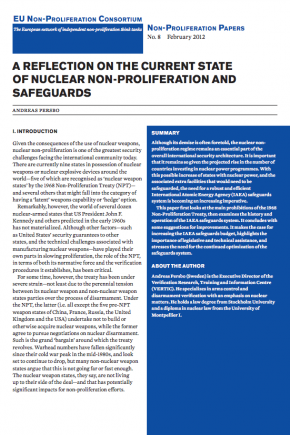A Reflection on the Current State of Nuclear Non-proliferation and Safeguards
Although its demise is often foretold, the nuclear nonproliferation regime remains an essential part of the overall international security architecture. It is important that it remains so given the projected rise in the number of countries investing in nuclear power programmes. With this possible increase of states with nuclear power, and the associated extra facilities that would need to be safeguarded, the need for a robust and efficient International Atomic Energy Agency (IAEA) safeguards system is becoming an increasing imperative. This paper first looks at the main prohibitions of the 1968 Non-Proliferation Treaty, then examines the history and operation of the IAEA safeguards system. It concludes with some suggestions for improvements. It makes the case for increasing the IAEA safeguards budget, highlights the importance of legislative and technical assistance, and stresses the need for the continued optimization of the safeguards system.

